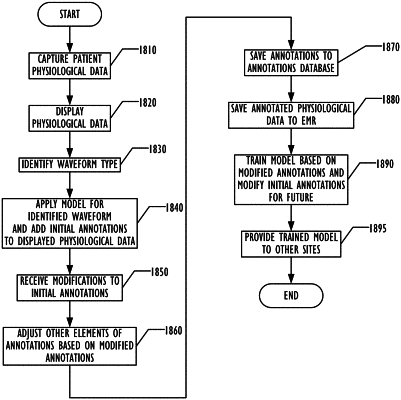| CPC G06N 20/00 (2019.01) [A61B 5/339 (2021.01); A61B 5/349 (2021.01); A61B 5/7435 (2013.01); G16H 10/60 (2018.01); G16H 15/00 (2018.01); G16H 30/40 (2018.01); G16H 50/20 (2018.01)] | 20 Claims |

|
1. A method of annotating physiological waveform data, comprising:
analyzing a physiological data waveform corresponding to a first type of physiological data, based on a model corresponding to the first type of physiological data;
generating a first annotation automatically corresponding to the physiological data waveform based on the model, wherein the first annotation corresponds to a repeating feature of the physiological data waveform;
sending the physiological data waveform to a user display device;
sending the first annotation to the user display device for display on the physiological data waveform with the corresponding repeating feature of the physiological data waveform;
receiving a modification to the first annotation, wherein the modification repositions the first annotation on the physiological data waveform;
creating a second annotation based on the modification;
saving the second annotation in an annotation database; and
training the model using machine learning based on the second annotation and the physiological data waveform, generating a trained model.
|